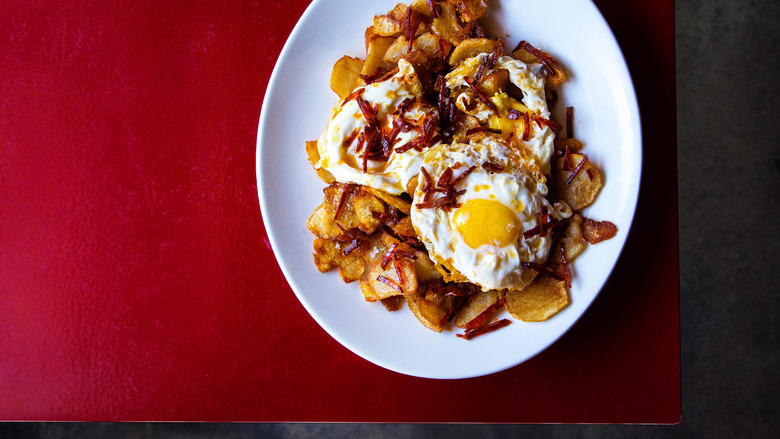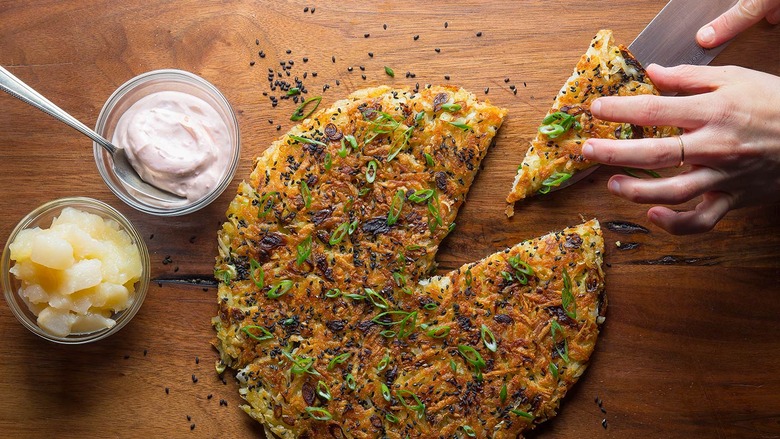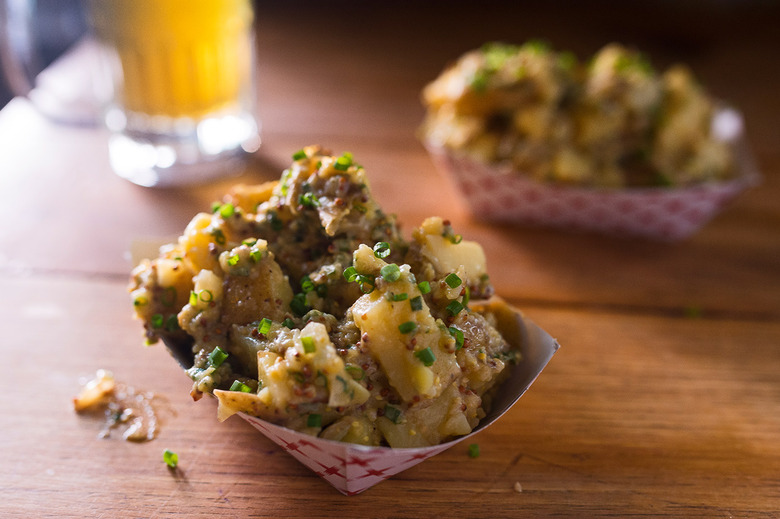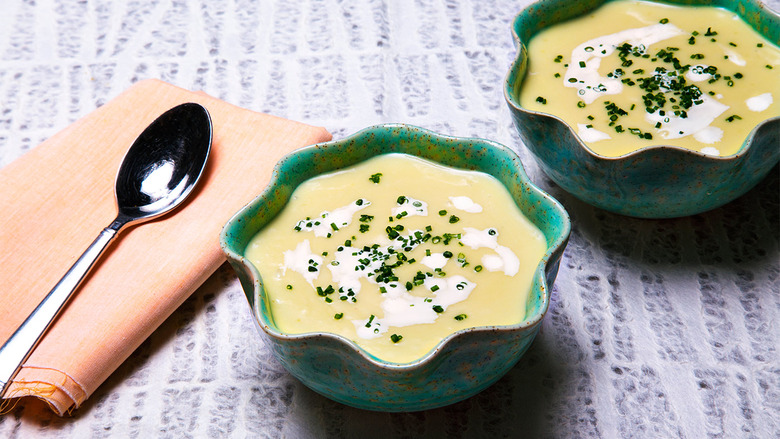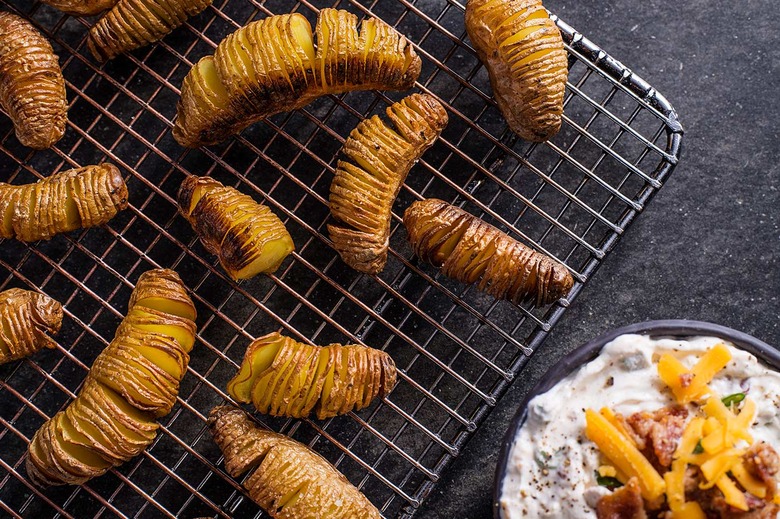Which Type Of Potato Should You Use?
From couch potato to dressed-up Dauphinoise
I say potato, you say . . . what's the best one for mash?
It's a good question. Potatoes are the ultimate comfort food, but there's nothing comfortable about gluey mash or grainy roasted potatoes, which is exactly what happens if you mix up your Red Bliss with your Russet. We consulted Allen Dikker, potato expert and owner of Potatopia, a small chain of potato-focused restaurants with locations in New York, New Jersey and Florida, to learn how to pick the right spud every time.
First, though, a couple of pointers:
① Eat the skin: Potatoes are a rich source of fiber, iron, potassium and vitamins, both with their skin on and off. But if you eat the skin, you get more of the goodness and, according to Dikker, a superior taste.
② Nothing, potatoes included, lasts forever: In fact, they last for about two weeks at room temperature and a few months when stored at 45 to 55 degrees in a dark pantry. Don't keep potatoes near other fruits or veggies, especially onions, which release ethylene and can cause them to go bad.
③ Know when to toss 'em: Here's where you have to use your best judgment. If the potato is still firm, take off the stalks and use it. If it's shrunken and soft—or worse, green—toss it straight into the organics bin.
RELATED The Best Potato Recipes "
Now, on to the good stuff: cooking. How a potato reacts when it's cooked is directly tied to its starch content. Waxy potatoes like Red Bliss and fingerlings have a low starch content and hold their shape. Starchy potatoes like the classic russet have the fluffiest texture. Then there's all-purpose potatoes, like Yukon Golds, which fall somewhere in the middle and are superior in creaminess.
Roasted Potatoes
You want roasted spuds to hold their shape, so look to waxy varieties like Red Bliss and fingerlings. Dikker's favorites are tricolor baby potatoes. "The purple ones have a nutty quality, the baby Bliss give a sweet taste, and the baby Yukons add a creamy texture—it's a great combination."
French Fries
Starchy potatoes like russets offer that crunchy-on-the-outside-and-fluffy-on-the-inside quality that's perfect for fries. Dikker says the hard-to-find Kennebecs are worth looking for; their low starch and water content allows them to reach optimum color and crunch faster. "The only downside is they don't have a long shelf life," he says, meaning you'll want to cook them as soon as you procure them—not exactly a tall order when there are fries involved.
Mashed Potatoes
Creamy and buttery is the name of the game with mashed potatoes, so avoid waxy spuds, which can lead to the dreaded potato paste, and opt for an all-purpose potato instead. "I do add butter, but with Yukons, you don't need to," Dikker says. "They are already so creamy."
Hash Browns, Latkes, Gnocchi and Potato Chips
For dishes needing assembly, look for a potato with a higher starch content, like a russet or Yukon Gold. "Draining excess water on a paper towel before using makes them ideal for molding," Dikker says.
Dauphinoise, Scalloped Potatoes and Gratins
Waxy potatoes hold their shape, so it's only natural to assume that a Red Bliss, say, would be the go-to for these types of dishes. But that luxurious, creamy texture comes only from starchy or all-purpose potatoes like russets and the much-coveted Kennebecs, so those are your best bets.
Baked Potatoes
For baked potatoes, you want crispy skin, fluffy insides and a bit of weight to handle the loaded-up toppings. Potato size is measured by how many fit in a 50-pound carton; Dikker won't accept anything less than big, 70-count russets for Potatopia's baked potatoes. "Most people won't understand what that means, but trust me, it's a big potato," he says.


